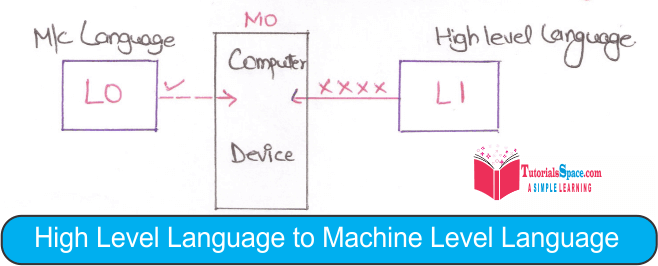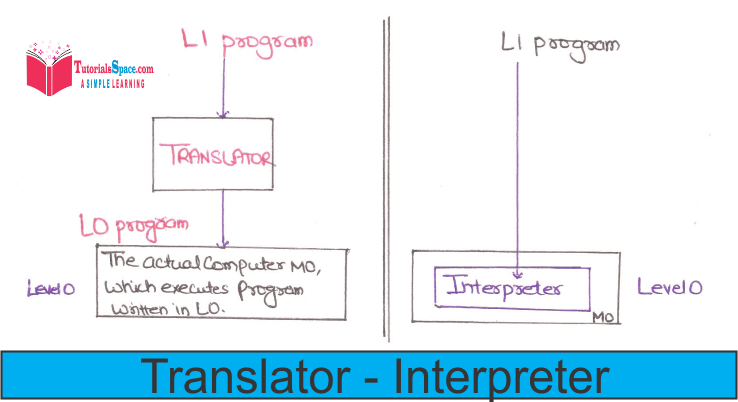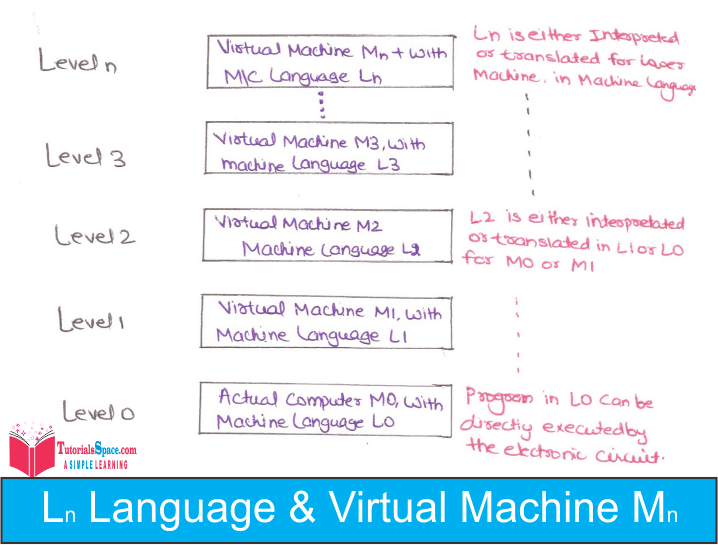
Structured Computer Organization
• When we entered in the era of Designing computers, a big problem came in existence this was that there is a gap between what is convenient for people and what is convenient for computer. Because most machine languages are so simple, it is difficult and tedious for people to use them.
• This problem lead to away of structuring computer as a series of abstractions, each abstraction building on the one below it.
• By this approach, the complexity can be mastered and computer system can be designed in a systematic, organised way. And this approach is called 'Structures Computer Organisation'.
• Let suppose there is 2 language L0 (machine language) and L1(other non understandable by machine) by M0.

So there is two method by which L1 can be executed on machine M0.
One method: Replace each L1 instruction to equivalent sequence of instructions in LO. So this technique is called ' TRANSLATION'.
Second Method: In this technique, write a program in L0 that take program in L1 as input data and carries them out by examining each instruction in turn and executing the equivalent sequence of L0 instruction directly.
This technique does not require for generating a new program in L0. It is called Interpretation and the program that carry it out is called an Interpreter.

So We can imagine a no. of Level each one with its own language Ln and virtual machine Mn.

• A user of level and have only to know language Ln and can forget about all below layer: to his eye the computer is a virtual machine Mn.
• So true Interpretation / Translation the final result is that Ram written in Ln will be executed on M0(the actual computer with understand machine language).
• It involves: - CPU, Cache, main memory, secondary memory, and input output devices.
17- Structured Organization- Introduction
CLICK HERE TO Download This PDF NOTES
